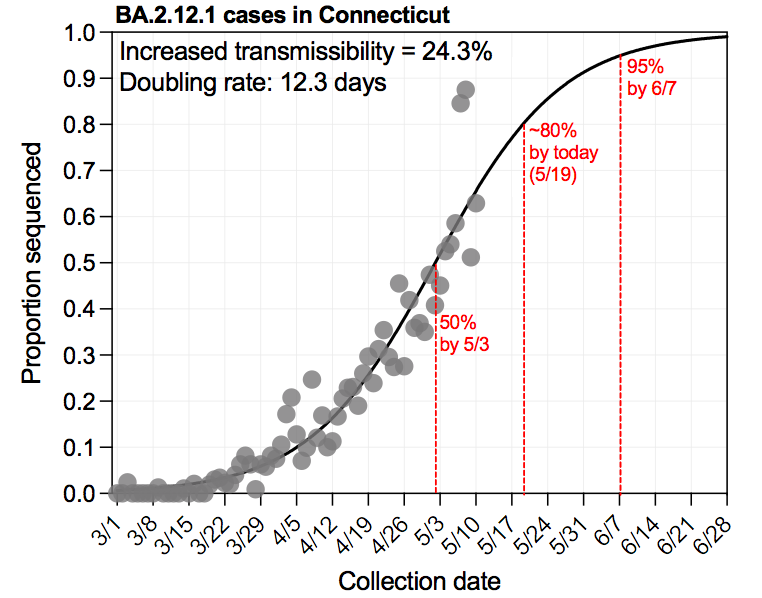🧬6/24 Connecticut #SARSCoV2 variant surveillance
@CovidCT | @jacksonlab | @CTDPH | @YaleSPH | @Yalemed | @YNHH
Alpha (B.1.1.7) = 59% (📈2%)
Gamma (P.1) = 4.5% (📉6.4%)
Delta (B.1.617.2) = 2.3% (📉4.2%)
short 🧵 | Report 👉
covidtrackerct.com/variant-survei…
@CovidCT | @jacksonlab | @CTDPH | @YaleSPH | @Yalemed | @YNHH
Alpha (B.1.1.7) = 59% (📈2%)
Gamma (P.1) = 4.5% (📉6.4%)
Delta (B.1.617.2) = 2.3% (📉4.2%)
short 🧵 | Report 👉
covidtrackerct.com/variant-survei…
2/8 In Connecticut, the % of sequenced cases that are the Delta variant (B.1.617.2) decreased in recent weeks. This is probably more of a reflection of noisy data when trying estimate frequencies from a small number of cases vs an actual decline in delta. 

3/8 Looking at our neighbors in Massachusetts and New York, delta is 10-20%, so we in Connecticut are probably pretty close to that. My guess is that we'll see a 📈 in delta in the coming weeks to reflect the trends of our neighbors. 



4/8 The continuing good news is that COVID-19 cases in CT continue to remain very low, meaning that we are not yet seeing any real impacts of delta locally. Given this, a common question that I am being asked is: "why should we even care about delta?" 

5/8 The answer: If delta continues to become more prevalent, it has the ability to make outbreaks among unvaccinated populations a lot worse, furthering the health disparities in our communities. As a result, we may also see an increase in total cases, as seen in the UK. 

6/8 For the vaccinated populations, delta is not an immediate threat. However, our vaccines work best when they have less work to do. So if delta increases transmission in our communities, it will provide more opportunities for some vaccines to fail.
7/8 As for any variant, the best way to prevent your vaccination from failing is to increase the vaccination rates in your networks. Please talk to your family and friends about the benefits of vaccines.
cdc.gov/coronavirus/20…
cdc.gov/coronavirus/20…
8/8 This week I'd like to thank our @YaleSPH summer interns, @BilligKendall & @rtobiaskoch, who are learning how to complete our entire process - from sequencing to analysis - and will help lead our partnerships in the Caribbean 🌎👏🙌 

Sorry, Kendall's @ did not stick... @kendallbillig
• • •
Missing some Tweet in this thread? You can try to
force a refresh















